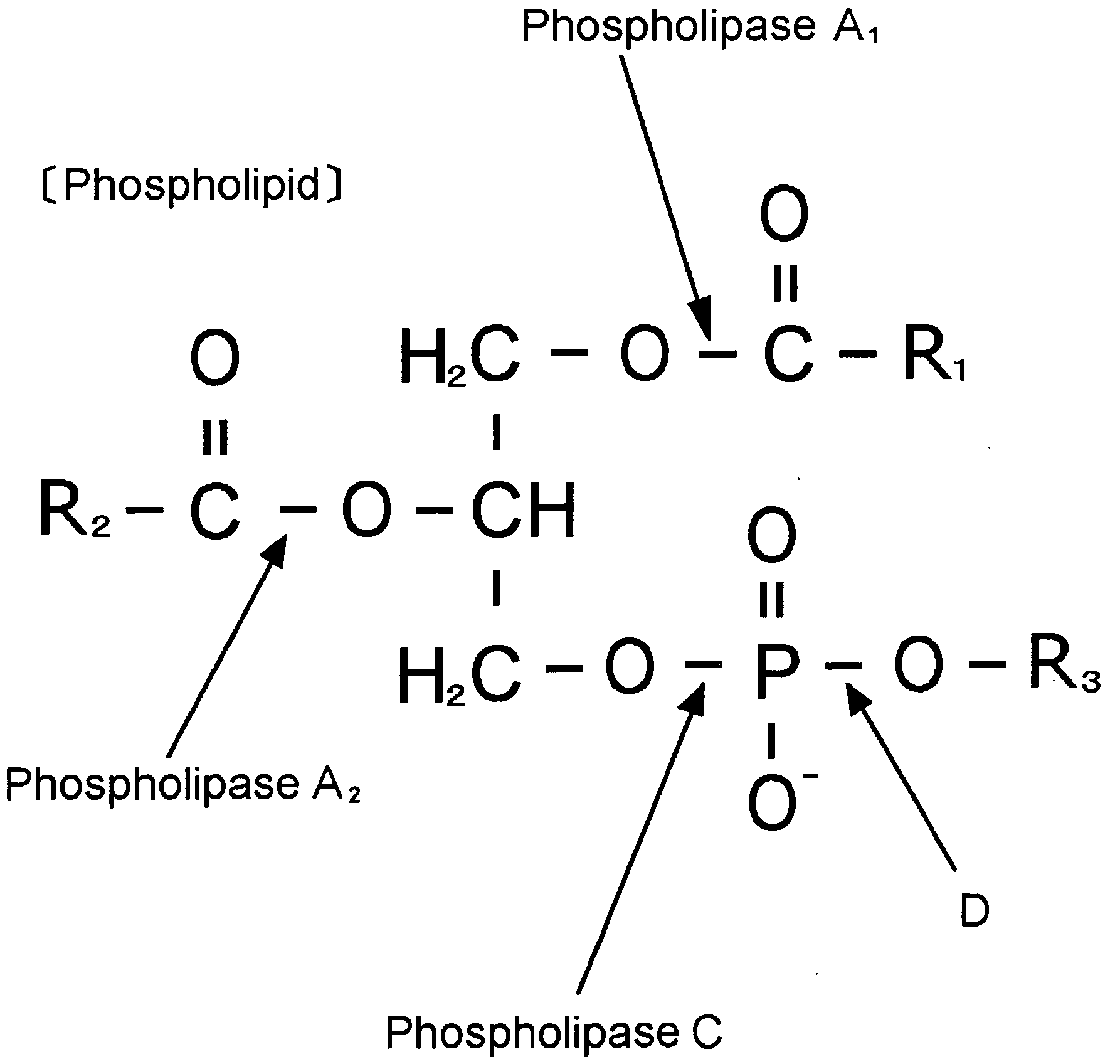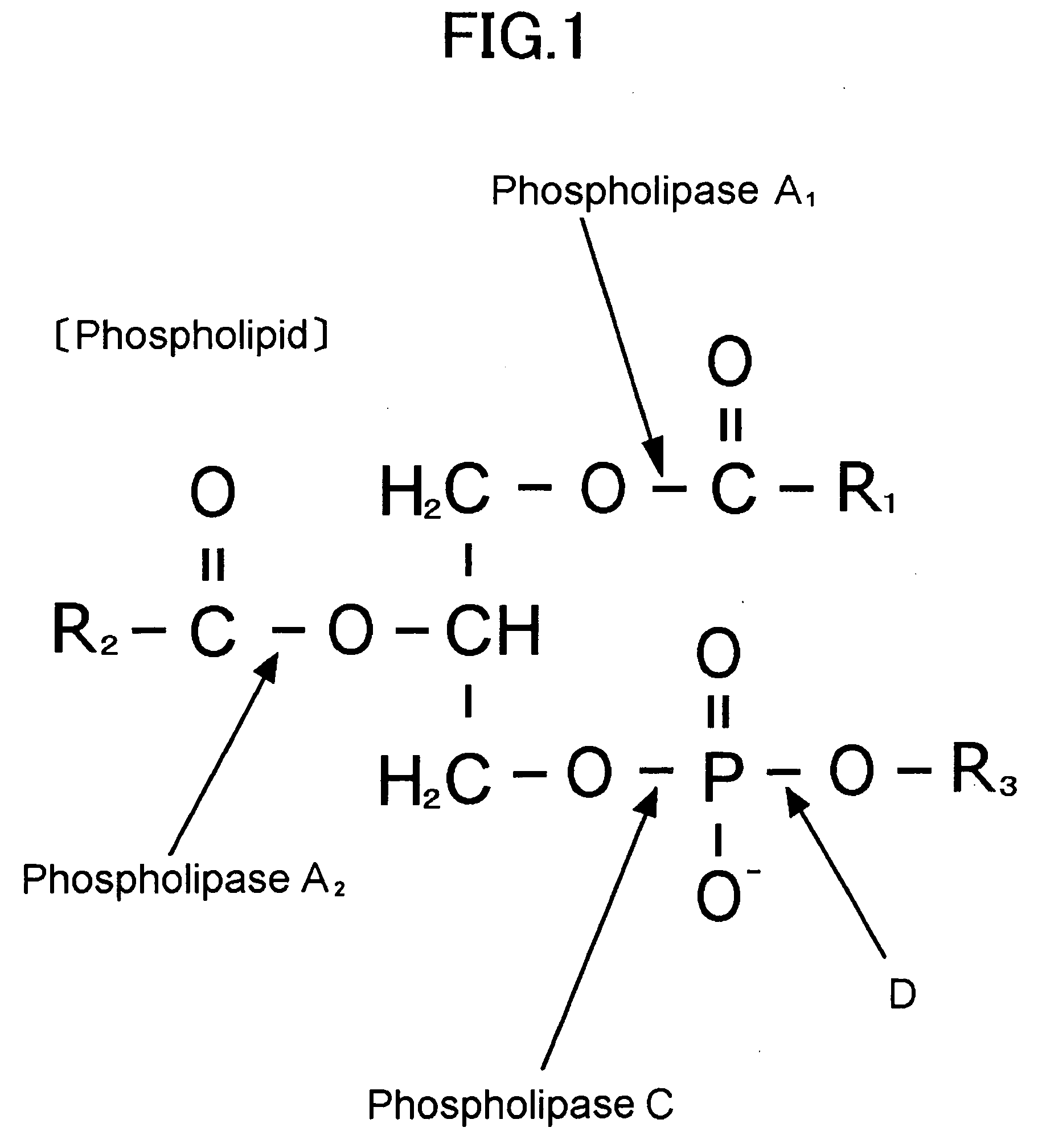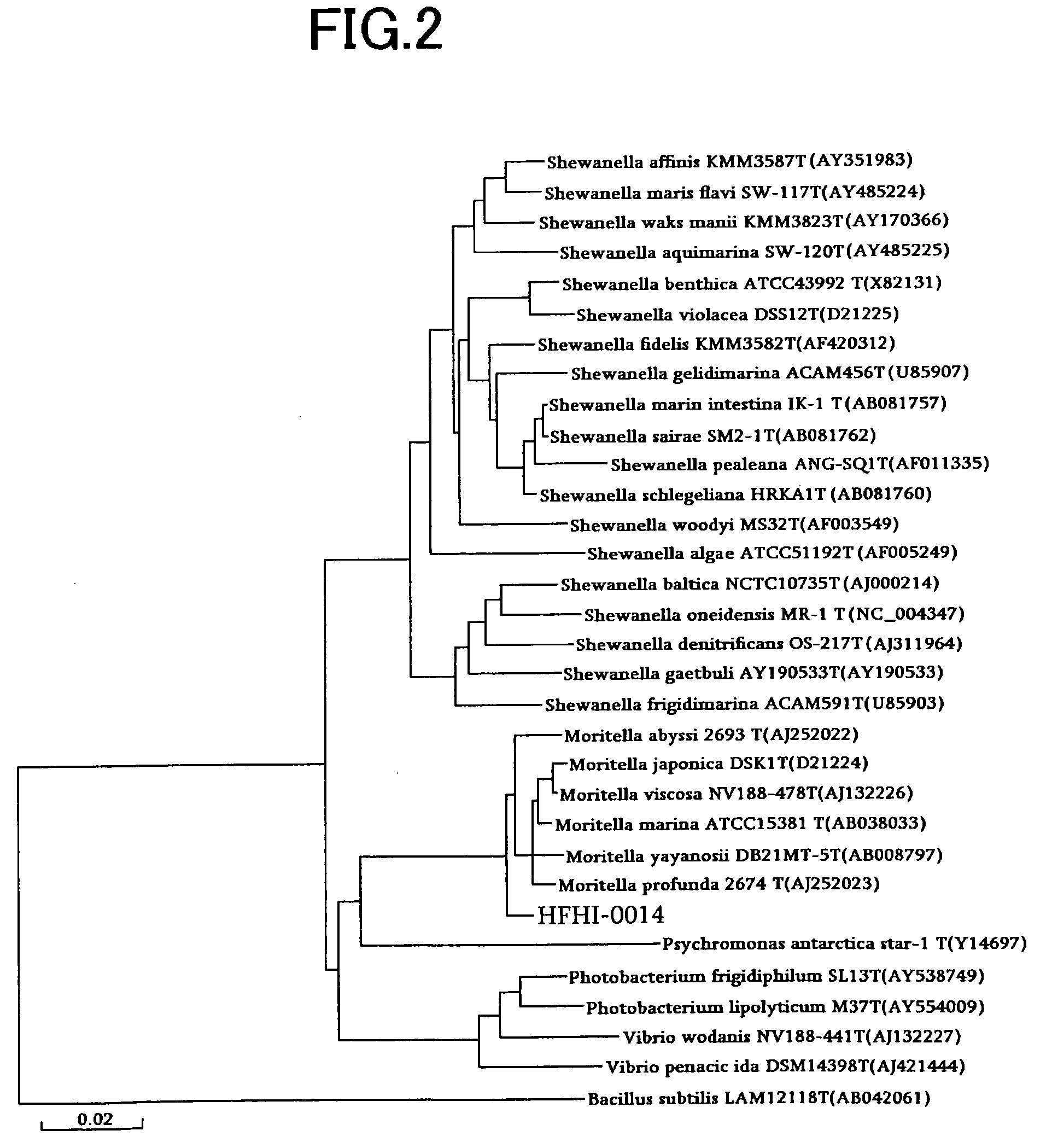Novel Microbe, Lipid Modifying Agent, Process for Producing 2-Acyl-Lysophospholipid, Process for Producing Diacylglycerol, Process for Producing Ceramide, and Method of Degumming Oil or Fat
a technology of lipid modifying agent and microorganism, which is applied in the field of new microorganisms, can solve the problems of troublesome operations and inability to market phospholipase a/sub>1 as a product, and achieve the effect of preventing alteration and deterioration of lipids
- Summary
- Abstract
- Description
- Claims
- Application Information
AI Technical Summary
Benefits of technology
Problems solved by technology
Method used
Image
Examples
experiment 1
[0033]The Moritella sp. HFHI-0014 strain was inoculated in the K28 culture medium (containing 0.5% of peptone, 0.1% of yeast extract, and 50% of artificial seawater), and subjected to shaking cultivation for 72 hours at the temperature of 10 degrees Celsius. Centrifugation was carried out to the thus-cultivated medium for removal of the bacterial bodies therefrom, whereupon a culture supernatant without the bacterial bodies was obtained. As a substrate, one of the following two substrates (two different synthesized PCs) was employed: 5 mg of 1-palmitoyl-2-oleoylphosphatidylcholine (16:0 / 18:1 (n-9)-PC); and 5 mg of 1-oleoyl-2-palmitoylphosphatidylcholine (18:1 (n-9) / 16:0-PC). On the other hand, 0.5 ml of diethyl ether was added to 0.5 ml of the afore-said culture supernatant, thereby providing a total 1.0 ml of culture solution. Then, those substrate and culture solution were agitated together for 13 hours at the temperature of 10 degrees Celsius, followed by extraction of lipids the...
experiment 2
[0035]The Moritella sp. HFHI-0014 strain was inoculated in the K28 culture medium (containing 0.5% of peptone, 0.1% of yeast extract, and 50% of artificial seawater), and subjected to shaking cultivation for 72 hours at the temperature of 10 degrees Celsius. Centrifugation was carried out to the thus-cultivated medium for removal of the bacterial bodies therefrom, whereupon a culture supernatant without the bacterial bodies was obtained. As a substrate, 0.5 mg of soybean oil was provided. On the other hand, 0.5 ml of diethyl ether was added to 0.5 ml of the afore-said culture supernatant, thereby providing a total 1.0 ml of culture solution. Then, those substrate and culture solution were agitated together for 18 hours at the temperature of 10 degrees Celsius. A resultant solution obtained by such agitation was fractionated and analyzed by silica gel TLC, with the result that any free fatty acid was not detected therefrom, which confirmed that no hydrolysis was done in the culture s...
experiment 3
[0036]The Moritella sp. HFHI-0014 strain was inoculated in the K28 culture medium (containing 0.5% of peptone, 0.1% of yeast extract, and 50% of artificial seawater), and subjected to shaking cultivation for 72 hours at the temperature of 10 degrees Celsius. Centrifugation was carried out to the thus-cultivated medium for removal of the bacterial bodies therefrom, whereupon a culture supernatant without the bacterial bodies was obtained. As a substrate, 1.0 mg of diacylglycerol (DG) was provided. On the other hand, 0.5 ml of diethyl ether was added to 0.5 ml of the afore-said culture supernatant, thereby providing a total 1.0 ml of culture solution. Then, those substrate and culture solution were agitated together for 18 hours at the temperature of 10 degrees Celsius. A resultant solution obtained by such agitation was fractionated and analyzed by silica gel TLC, with the result that any of free fatty acid and MG was not detected therefrom, which confirmed that no hydrolysis was don...
PUM
| Property | Measurement | Unit |
|---|---|---|
| temperature | aaaaa | aaaaa |
| soluble property | aaaaa | aaaaa |
| surface-active property | aaaaa | aaaaa |
Abstract
Description
Claims
Application Information
 Login to View More
Login to View More - R&D
- Intellectual Property
- Life Sciences
- Materials
- Tech Scout
- Unparalleled Data Quality
- Higher Quality Content
- 60% Fewer Hallucinations
Browse by: Latest US Patents, China's latest patents, Technical Efficacy Thesaurus, Application Domain, Technology Topic, Popular Technical Reports.
© 2025 PatSnap. All rights reserved.Legal|Privacy policy|Modern Slavery Act Transparency Statement|Sitemap|About US| Contact US: help@patsnap.com



